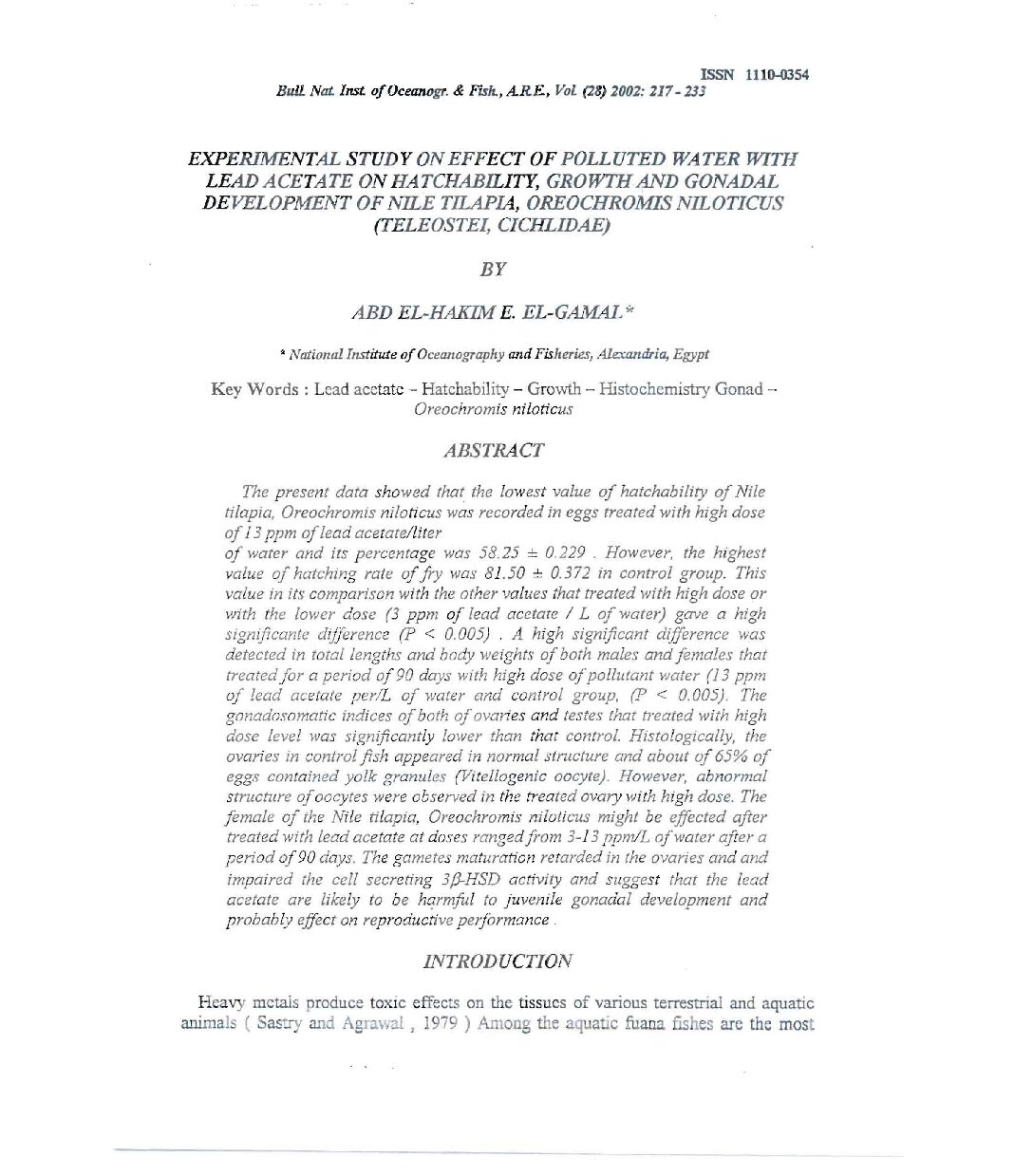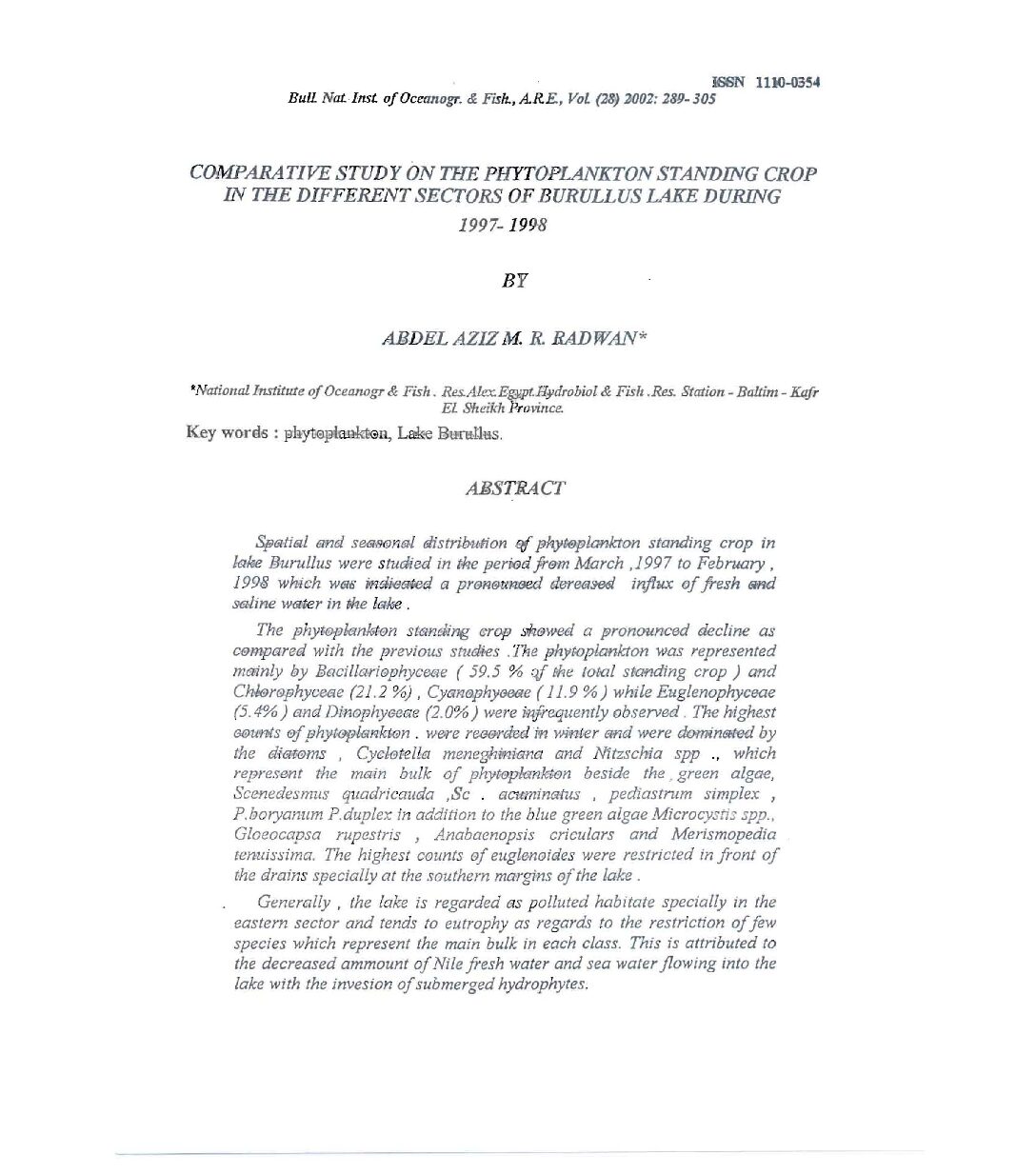Categories
vol-28EXPERIMENTAL STUDY ON EFFECT OF POLLUTED WATER WITH
LEAD ACETATE ON HATCHABILITY, GROWTHAND GONADAL
DEVELOPMENT OF NILE TILAPIA, OREOCHROMIS NILOTICUS
(TELEOSTEI, CICHLIDAE)
BY
ABD EL-HAKIM E. EL-GAMAL ><
• National Institute ofOceanography and Fisheries, Alexandria, Egypt
Key Words: Lead acetate - Hatchability - Growth - Histochemistry Gonad
Oreochromis niloticus
ABSTRACT
The present data showed that the lowest value of hatchability ofNile
tilapia, Oreochromis niloticus was recorded in eggs treated with high dose
of13 ppm oflead acetate/liter
of water and its percentage was 58.25 :!: 0.229 . However, the highest
value of hatching rate offry was 81.50 :!: 0.372 in control group. This
value in its comparison with the other values that treated with high dose or
with the lower dose (3 ppm of lead acetate / L of water) gave a high
significante difference (P < 0.005) . A high significant difference was
detected in total lengths and body weights ofboth males and females that
treated for a period of 90 days with high dose ofpollutant water (13 ppm
of lead acetate periL of water and control group, (P < 0.005). The
gonadosomatic indices ofboth ofovaries and testes that treated with high
dose level was significantly lower than that control. Histologically, the
ovaries in control fish appeared in normal structure and about of 65% of
eggs contained yolk granules (Vitellogenic oocyte). However, abnormal
structure ofoocytes were observed in the treated ovary with high dose. The
female of the Nile tilapia, Oreochromis niloticus might be effected after
treated with lead acetate at doses rangedfrom 3-13 ppmIL ofwater after a
period of90 days. The gametes maturation retarded in the ovaries and and
impaired the cell secreting 3f3-HSD activity and suggest that the lead
acetate are likely to be hqrmjul to juvenile gonadal development and
probably effect on reproductive performance.







